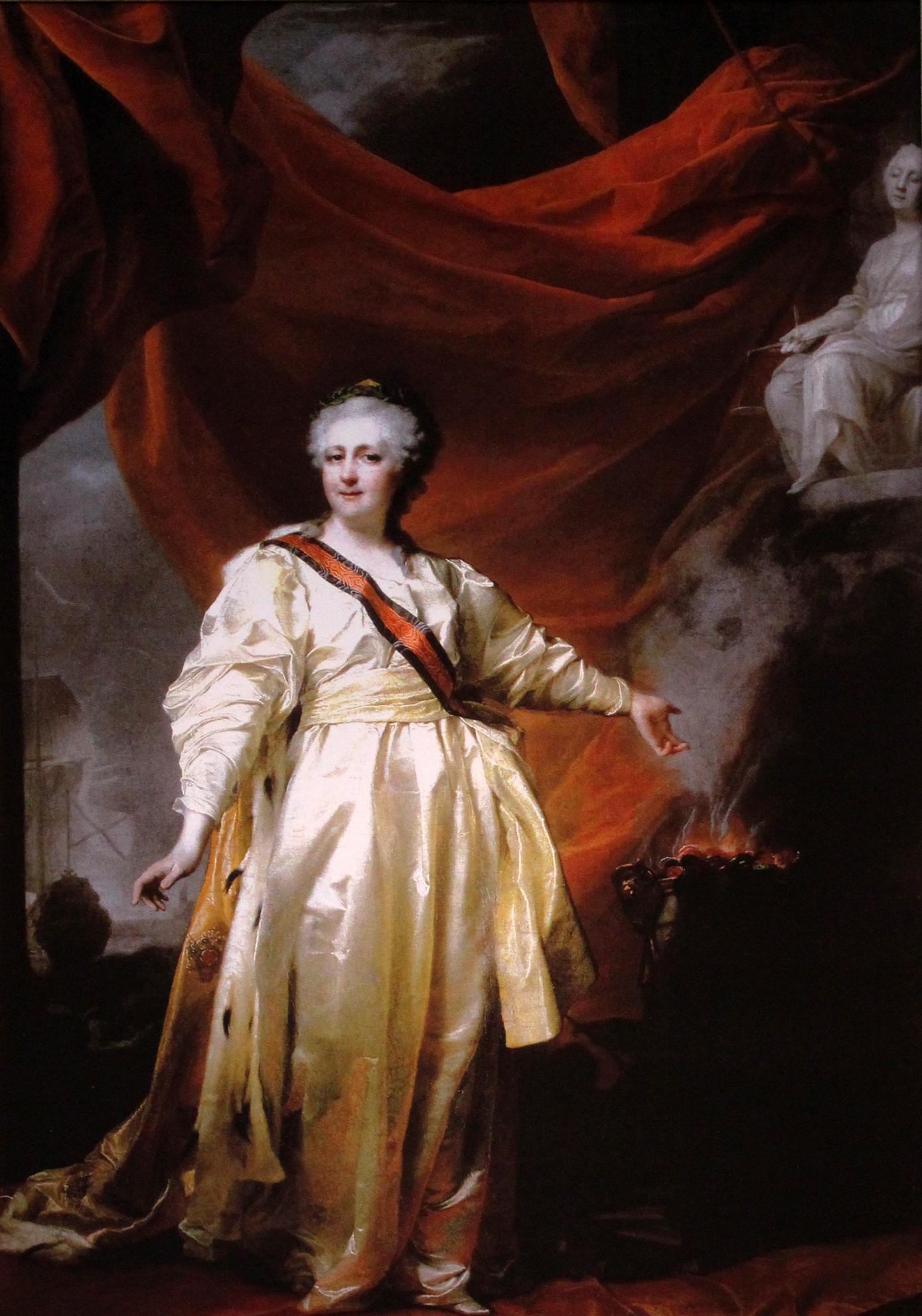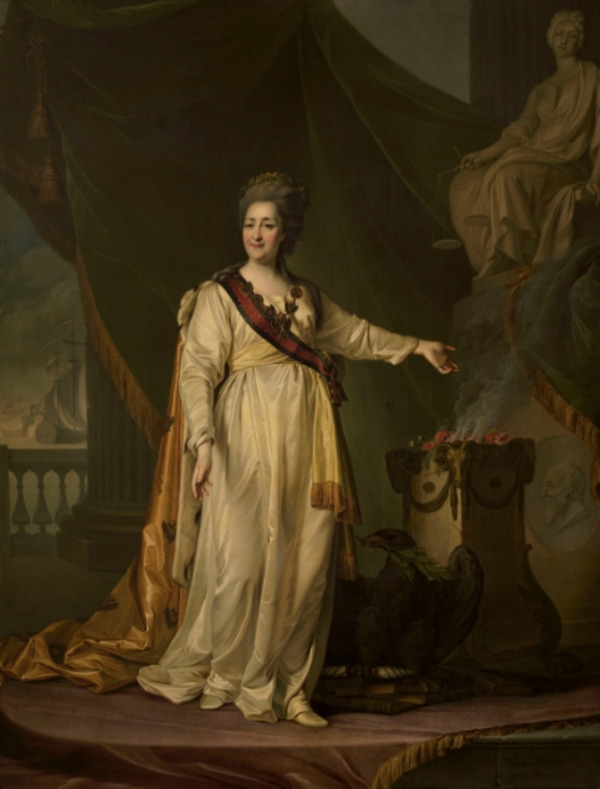In the collection of the Tambov Regional Ethnography Museum there is a portrait of Empress Catherine II the Legislatress. It is a copy of the large portrait done by artist Dmitry Levitsky in 1783. Both the original and the copy are painted in the style of ceremonial portraiture. Levitsky added some details characteristic of the allegorical portrait where the setting and the image of the character are full of symbolic meaning.
Portrait of Catherine II the Legislatress
Время создания
1783
Размер
75х50 см cm
Техника
Print
Коллекция
Выставка
10
Открыть в приложении#6
Unknown author
Portrait of Catherine II the Legislatress
#7
#3
Catherine II the Legislatress in the Temple of the Goddess of Justice. Dmitry Levitsky. 1783. Oil on canvas. The State Russian Museum.
Catherine II is portrayed in the very centre of the canvas in the guise of Themis, the goddess of justice. In the background, the artist painted a heavy red velvet curtain draped in deep folds, which accentuates the solemnity of the scene. The original portrait by Levitsky has antique columns behind the curtain.
#4
On the left of the Empress, there is a sacrificial altar on which Catherine II is burning poppies. In ancient times, it meant awakening from sleep and deliverance from oblivion, a symbol of the monarch sacrificing their peace and comfort for the sake of the state and the people.
There is a stack of books — a code of state laws — at the Empress’ feet. It is meant to emphasise her enlightened reign along with her love of sciences. In the original portrait by Levitsky, clearly visible is an eagle sitting on the books, on guard of the laws. It has an olive branch in its beak and a perun (lightning) in its claws. The eagle was a symbol of imperial power in Russia, the olive branch — of military victories. In the copy from the Tambov Museum, just the outline of the eagle wing and head with a branch in its beak are seen.
The portrait by Levitsky and its copy are not just a fine specimen of the ceremonial portrait of Empress Catherine II. Levitsky presented her as an ideal monarch as viewed by Russian 18th century enlighteners — tough, fair, victorious in battles, progressive and ready to sacrifice their own interests for the sake of the state. In a way, the subject of the portrait alludes to the document known as the Nakaz (Order) in which she asserted the principles of equality of all people before law and spoke in favour of education.
Princess Sophie Auguste Friederike of Anhalt-Zerbst, future Empress Catherine the Great, was born in Stettin, Prussia, in 1729. At the age of 15, she arrived in Russia as the bride of future Emperor Peter III. In 1744, she converted from Lutheranism to Russian Orthodoxy and received the name of Yekaterina Alekseyevna in honour of Catherine I. The marriage to Peter took place in 1745.Peter III succeeded to the throne in January 1762, and barely six months later Catherine supported by the army headed a coup d’état overthrowing her husband. In October 1762, she was crowned in Moscow as a reigning empress.
There is a stack of books — a code of state laws — at the Empress’ feet. It is meant to emphasise her enlightened reign along with her love of sciences. In the original portrait by Levitsky, clearly visible is an eagle sitting on the books, on guard of the laws. It has an olive branch in its beak and a perun (lightning) in its claws. The eagle was a symbol of imperial power in Russia, the olive branch — of military victories. In the copy from the Tambov Museum, just the outline of the eagle wing and head with a branch in its beak are seen.
The portrait by Levitsky and its copy are not just a fine specimen of the ceremonial portrait of Empress Catherine II. Levitsky presented her as an ideal monarch as viewed by Russian 18th century enlighteners — tough, fair, victorious in battles, progressive and ready to sacrifice their own interests for the sake of the state. In a way, the subject of the portrait alludes to the document known as the Nakaz (Order) in which she asserted the principles of equality of all people before law and spoke in favour of education.
Princess Sophie Auguste Friederike of Anhalt-Zerbst, future Empress Catherine the Great, was born in Stettin, Prussia, in 1729. At the age of 15, she arrived in Russia as the bride of future Emperor Peter III. In 1744, she converted from Lutheranism to Russian Orthodoxy and received the name of Yekaterina Alekseyevna in honour of Catherine I. The marriage to Peter took place in 1745.Peter III succeeded to the throne in January 1762, and barely six months later Catherine supported by the army headed a coup d’état overthrowing her husband. In October 1762, she was crowned in Moscow as a reigning empress.
#8
Tambov Regional Ethnography Museum
читать дальшескрыть
00:00
00:00
1x
Portrait of Catherine II the Legislatress
Время создания
1783
Размер
75х50 см cm
Техника
Print
Коллекция
Выставка
10
Открыть в приложении
Поделиться




